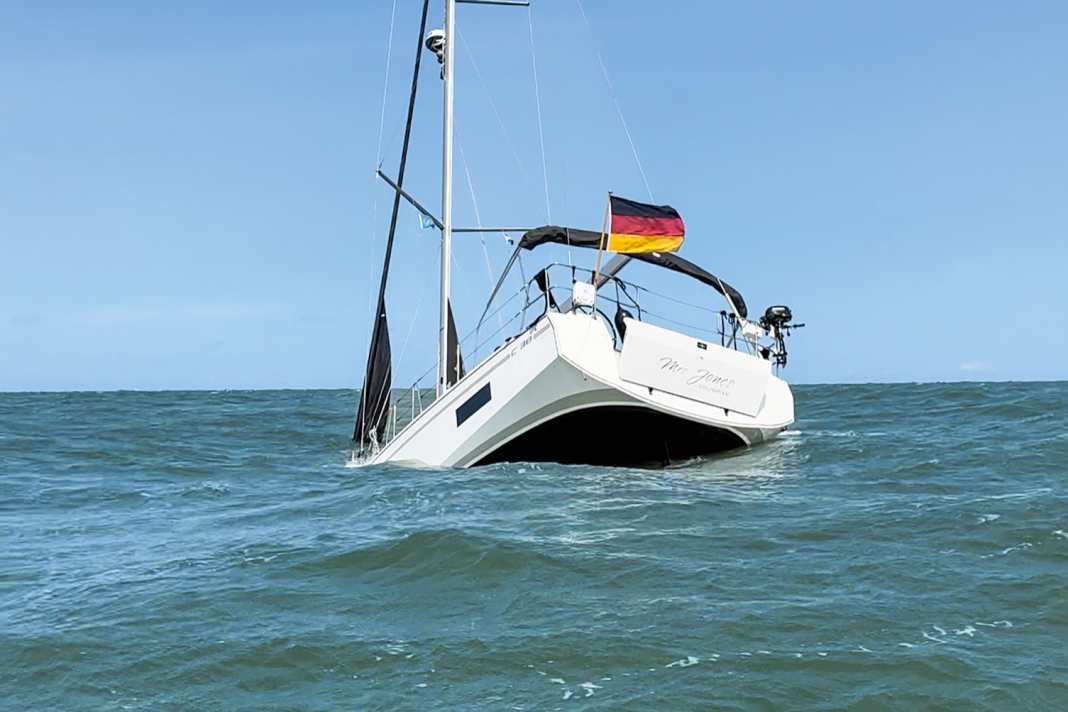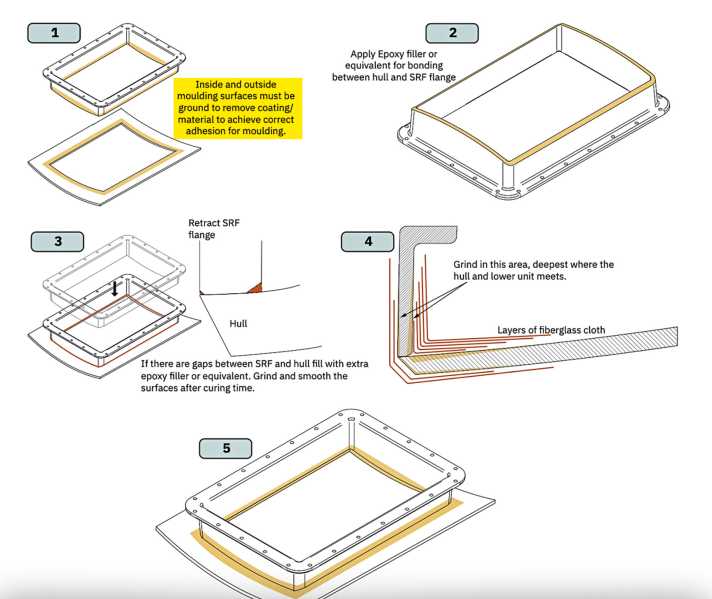Bow thruster weak point: Two accidents show how important correct installation is






In mid-March this year, a Jeanneau sinks off Laboe. The crew escaped with a scare and were able to climb into the dinghy and stay there until rescuers arrived. The sailors only have a few minutes between the moment the water ingress is noticed and the sinking. In July, the same thing happened on a Bavaria C 38 in the Westerschelde off Cadzand. Here too, the German crew only had a few minutes to get to safety.
In both cases, experts found that a retractable bow thruster was unable to cope with the similar sea conditions of 5 to 6 Beaufort and around one to one and a half metres of swell. The thrusters were simply pushed inwards into the hull. The result: large holes in the hull through which a lot of water quickly penetrated.
In both cases, experts found that the bow thruster housings had not been attached properly. The difference: on the Jeanneau the thruster was installed ex shipyard, on the Bavaria it was not. Here, the dealer had commissioned a local shipyard to retrofit the device.
Modern hull shapes generate sudden load peaks in the bow area
But how exactly should such an installation be carried out? The bow area of modern yachts is particularly voluminous. This means that a lot of buoyancy is generated there. However, this buoyancy does not build up slowly as with a V-shaped forefoot, but is more or less immediate as soon as the bow enters a wave. This creates load peaks there. The design of the extendable bow thruster must be able to absorb these.
This is calculated by the manufacturers and also taken into account in the design. The Achilles heel of the system is the connection between the bow thruster housing and the hull. On the plus side, the box-shaped structure has a stiffening effect similar to a strongback in the keel area. But even there, the sticking point is the so-called laminate that connects the structure to the hull.
And this is precisely where the manufacturer's installation instructions remain somewhat vague. Nevertheless, Vetus recommends the use of epoxy resin and expressly advises against polyester resins. Sleipner stipulates that for sandwich hulls, the inner laminate and core material should first be removed up to ten centimetres around the housing and replaced with solid laminate. This should then be laminated on.

Bow thruster installation: The laminate must be strong enough
But how thick and how wide should the flange be? "Sufficiently thick" is what some instructions say. You should also ask designers or the shipyard. After all: Vetus recommends at least 1x 300 gram and 5x 600 gram thick fabrics.
Helge von der Linden and his company M.u.H. von der Linden advise shipyards that carry out such installations. "We recommend a flange width of 20:1, where 1 stands for the thickness of the laminate."
Von der Linden continues: "The laminate must be at least as thick as the actual laminate in order to achieve the same strength. For example, if the fuselage is 4 millimetres thick on the inside and 8 millimetres thick on the outside, without the core material, the flange must be (4 + 8) x 20, i.e. 240 millimetres wide, and the laminate 12 millimetres thick."
The connection between the hull and the housing of the bow thruster must be extremely solid
A proper fillet ensures better adhesion. The bow thruster housing can be adapted to the curve of the fuselage using thickened resin or, depending on the manufacturer, by cutting the housing itself to size. However, the connection between the housing and the fuselage remains important. It must be made very carefully and extremely solidly.
Jeanneau has launched a recall campaign in response to the accident. The solution offered by the shipyard's after-sales service is quite simple: holes are drilled into the flange, into which structural adhesive is then injected. "In the opinion of two experts, this is not sufficient," says Jochen-P. Kunze.
Kunze is a lawyer specialising in recreational craft law and is representing the owner of the sunken Jeanneau. "Even if the adhesive itself is strong enough, it remains unclear what condition the flanges were in before the device was installed. Were they sanded and degreased? If not, then of course the best adhesive in the world won't stick," says Kunze. Customers who are offered such a solution by Jeanneau should reject it and insist on a professional repair, says the lawyer, even if this is very costly.
What owners should look out for in their bow thruster
If a retractable thruster is installed on your yacht, you should take a close look at the connection between the housing and the hull: Is there sufficient laminate? Has the topcoat been removed from the hull beforehand, i.e. are there any traces of sanding? Are there any cracks? Is the laminate or adhesive even coming away from the hull at the edges? Then caution is advised! If in doubt, call in an expert.
If necessary, the company that installed the device can then be contacted with the results of this test. However, if this was a long time ago, there is no longer any entitlement to a warranty. In other words, it can be expensive.
With a little skill, you can also fit a laminate yourself. To do this, the ship must be dry. Expert von der Linden advises starting with the largest laminate width after careful sanding and degreasing in order to maximise the adhesive surface in the first layer, and then gradually using slightly smaller strips until the desired thickness is achieved. If you are travelling with a sander, resin and glass fibre anyway, it is worth considering making the area in which the bow thruster is installed a watertight compartment up to above the waterline. This way, in the event of a leak, only this area would fill up - and the ship would be prevented from sinking.

